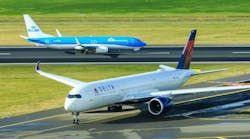Lockheed Martin was granted a new $180-million Pentagon contract modification to its existing contract covering planning and production for the F-35 Joint Strike Fighter aircraft. Specifically, the award is meant to cover the cost of replacing current F-35 test aircraft with new jets able to carry out comprehensive “flight science testing” with the series’ new Block 4 capabilities.
According to the U.S. Dept. of Defense, the new flight science aircraft are necessary “to prevent any increase in the test capability gap, and allow for future, holistic flight science testing of Block 4 capabilities for the Air Force, Marine Corps, Navy, non-U.S. Department of Defense (DOD) program partners”.
The F-35 is a series of fighter jets deployed for ground attack and combat, and available in three variants, for the USAF, USMC, and USN, and defense forces of more than a dozen other nations. It is the largest and most expensive U.S. defense program, with hundreds of program participants and suppliers.
About 1,000 F-35 aircraft have been delivered to date, and the program is in the process of having its capabilities upgraded – a project called the Block 4 update.
Block 4 will introduce more than 80 improved capabilities meant to keep the F-35 competitive against emerging threats, including improved sensors, sensor fusion, and expanded weapon capabilities. The current stage of the process is referred to as the Technology Refresh 3, which involves new data processors and expanded memory for enhanced mission processing, targeting, navigation, and communications.
The Pentagon’s award is scheduled to fund activities through December 2028, at various locations in the U.S., as well as Warton, England, and Grenaa, Denmark.
The funds are linked to Lot 19 of the F-35 production program, which together with Lot 18 is in production currently, though Lockheed and the Pentagon have not yet finalized the production scope in terms of unit numbers and cost.
The present expectation is that the production schedule for those lots will be finalized in the first half of this year.






